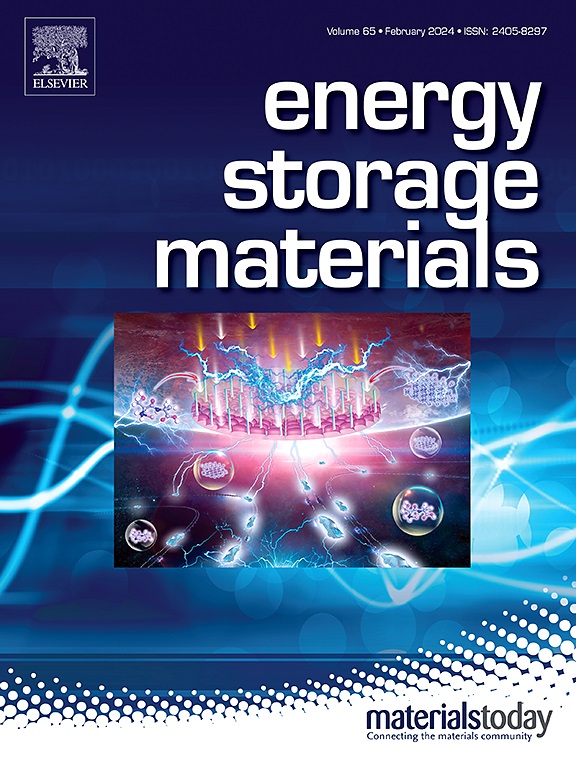Advancing highly reversible zinc electrode: Principles and strategies for electron and ion transport kinetics regulation
IF 18.9
1区 材料科学
Q1 CHEMISTRY, PHYSICAL
引用次数: 0
Abstract
The progressively growing demand for renewable energy such as wind and solar power has significantly stimulated the development of reliable and economical grid-level energy storage devices. Secondary zinc-based batteries based on aqueous electrolytes have garnered intense interest due to their high theoretical specific capacity, inherent safety, and low cost. However, the large-scale application of rechargeable aqueous zinc-based batteries (AZBs) is hindered by their unsatisfactory cycling stability and Coulombic efficiency, caused by zinc dendrite growth and detrimental side reactions. In principle, the interface chemistry of zinc electrode dominantly depends on electric and ion concentration fields. Herein, this review concentrates on fundamentals of zinc dendrites growth and parasitic reactions occurring within the zinc electrode and provides the underlying guidelines for the interface engineering, with an emphasis on electron and ion transport kinetics regulation. Besides, future perspectives are proposed to inspire researchers to design highly reversible zinc electrode. It is anticipated that this work can provide the scientific guidance for promoting practical applications of AZBs.

推进高可逆锌电极:电子和离子输运动力学调控的原理和策略
对风能和太阳能等可再生能源日益增长的需求,极大地刺激了可靠、经济的电网级储能设备的发展。基于水电解质的二次锌基电池因其高理论比容量、固有安全性和低成本而引起了人们的广泛关注。然而,由于锌枝晶生长和不良副反应导致的循环稳定性和库仑效率不理想,阻碍了可充电水性锌基电池(azb)的大规模应用。原则上,锌电极的界面化学性质主要取决于电场和离子浓度场。本文综述了锌枝晶生长的基本原理和锌电极内发生的寄生反应,并为界面工程提供了基本指导,重点是电子和离子传输动力学调节。展望了高可逆锌电极的设计前景。期望本研究能为促进azb的实际应用提供科学指导。
本文章由计算机程序翻译,如有差异,请以英文原文为准。
求助全文
约1分钟内获得全文
求助全文
来源期刊

Energy Storage Materials
Materials Science-General Materials Science
CiteScore
33.00
自引率
5.90%
发文量
652
审稿时长
27 days
期刊介绍:
Energy Storage Materials is a global interdisciplinary journal dedicated to sharing scientific and technological advancements in materials and devices for advanced energy storage and related energy conversion, such as in metal-O2 batteries. The journal features comprehensive research articles, including full papers and short communications, as well as authoritative feature articles and reviews by leading experts in the field.
Energy Storage Materials covers a wide range of topics, including the synthesis, fabrication, structure, properties, performance, and technological applications of energy storage materials. Additionally, the journal explores strategies, policies, and developments in the field of energy storage materials and devices for sustainable energy.
Published papers are selected based on their scientific and technological significance, their ability to provide valuable new knowledge, and their relevance to the international research community.
 求助内容:
求助内容: 应助结果提醒方式:
应助结果提醒方式:


